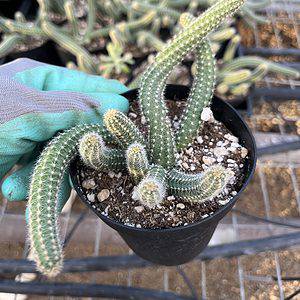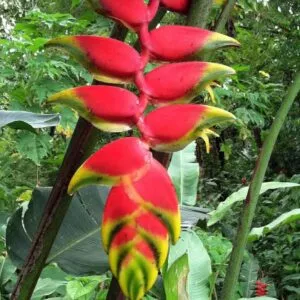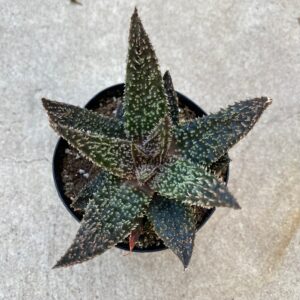No products in the cart.
Table of Contents
No wonder it is called the plush plant as the botanical name of Echeveria harmsii is so difficult to pronounce.
But still, it remains a gorgeous perennial succulent plant to have in rock gardens, dish gardens, rocky outcroppings, or indoors.
Yet, it also has another magical name, the Red Echeveria or Red Velvet Plush Plant.
No matter what you want to call it, this plant is easy to care for with little maintenance from your side.
Echeveria Harmsii Care
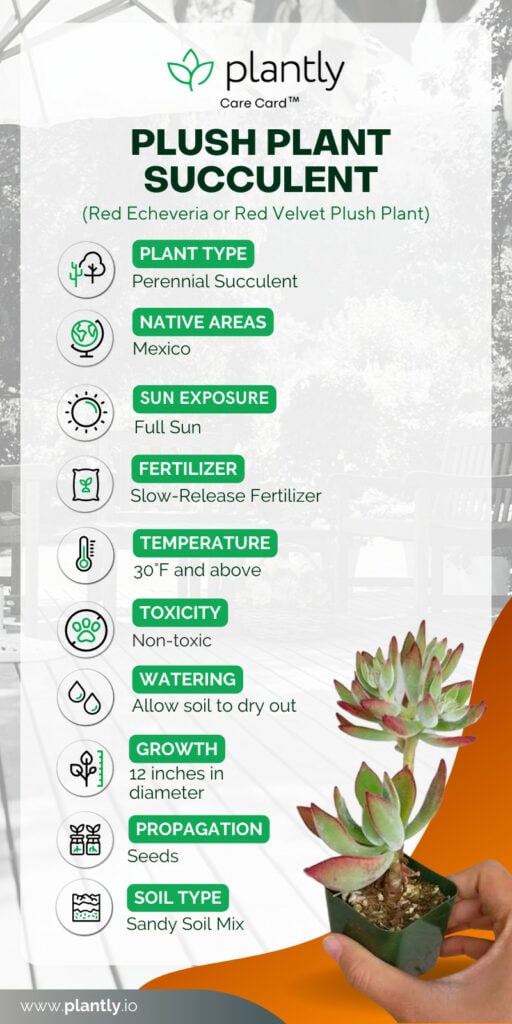
Echeveria harmsii plush plant is native to Hidalgo and Oaxaca in Mexico, and the last part of the name is in honor of Hermann August Theodor Harms, a German botanist. The succulent plant grows with small rosettes’ deep green leaves.
With too much direct sunlight, you will see leaves blush rose red. Furthermore, the foliage has a light velvet coating to give it a soft appearance hence the nickname plush plants.
When mature, it can measure 12 inches in diameter with the same height, and each leaf margin measures an inch long. Under the right conditions in spring, it produces a slender stalk that measures four inches long with red bell-shaped flowers with beautiful yellow tips.
The Type of Soil The Plush Succulent Plant Needs
As with most succulent plants, the Echeveria harmsii soil needs to be well-draining and water-retaining. So, it means little or no clay or peat moss but gravel, perlite, or even bark with coarse sand.
Hence, a cactus or succulent sandy soil mix is best to provide drainage for excess water to run through the potting soil. Furthermore, your container needs enough drainage holes to prevent root rot.
Light Requirement for Plush Plant Succulents
Echeveria harmsii is an outdoor plant in its natural habitat exposed to bright light or intense sun in the desert of Mexico. When you have the Echeveria harmsii plush plant, it helps to find a bright, light spot growing indoors. Place this plant near a sunny window for optimal coverage.
Still, with too little light, it can result in stretching out in search of natural light. Still, it will not harm your plants, but it can look unsightly.
So, to avoid this happening provide your plant with enough light. Alternatively, you can use artificial lighting like a grow light as they are ideal for succulents. Yet, the Echeveria harmsii plant can grow happily outdoors in partial shade, as direct sunlight can result in sunburn.
Furthermore, avoid drastic light changes to help prevent sunburning. The best is to do this gradually when moving your plant from inside the home to outside. Another note for indoor plant growing is that it is a moderately fast-growing plant.
So, where possible, find an ideal spot indoors at the west-facing window for a sunny spot.
How To Water Plush Plant Succulents
As with most succulents, the tiny rosette leaves store water and do not enjoy wet soil. Neither is your plant fond of droughts, which helps to water as soon as you feel the soil dries out.
We recommend watering well and allowing the soil to dry before watering. The important thing is that your plant has water-retaining qualities and needs not too much or too little water.
Hence, it means finding a balance that works best for you and your plant.
Fertilizer Needs
Your Echeveria harmsii benefits from feeding indoors, but does not need it when growing in its native habitat. You can feed your plant during summer with a slow-release balanced fertilizer made for cacti and succulents.
If you live in the colder USDA hardiness zones, then it is best not to provide your Echeveria harmsii with any fertilizer. Fertilizers are for plants in warmer climates during the active growing seasons.
Furthermore, your plant can go through a dormancy period when growing in low temperatures. At this time, it also helps reduce the watering as the porous soil can remain waterlogged, and you can stop feeding.
Temperature and Humidity Levels

The Echeveria harmsii is not very cold tolerant but can handle some light frost. Cold temperatures below 30°F are disastrous for your plant. Hence, it is best to find a warm spot as it loves warm temperatures.
When you live in the USDA hardiness zones 10 to 11, you must avoid exposing your plant to low temperatures. Neither should your succulent stand in too-cold drafts or excessive heat.
Your plant prefers to live in an arid environment with enough humidity, leading to fungal growth and other concerns. Hence, air circulation is essential to grow happily.
Air movement is also critical to keep the air flowing and prevent humidity.
Repotting and Pruning Your Echeveria
Your Echeveria harmsii plant enjoys growing in very bright light with well-draining soil. But you may find that the lance-shaped green leaves can get too large. Thus, it helps to remove the overly lush growth to help your plant grow bushier or in a shrub-like Echeveria form.
The best way to do this is to remove the leaves from the stem at the base. Alternatively, you can remove damaged and dead leaves at the base next to your water, and best done in the dormant stage.
The other thing you may find is that your plant can be a slow grower to medium one, and when it does become root-bound, it helps to consider a new pot. An ideal time to repot your Echeveria harmsii is in the fall to early winter.
Propagating Echeveria Harmsii Plush Plant
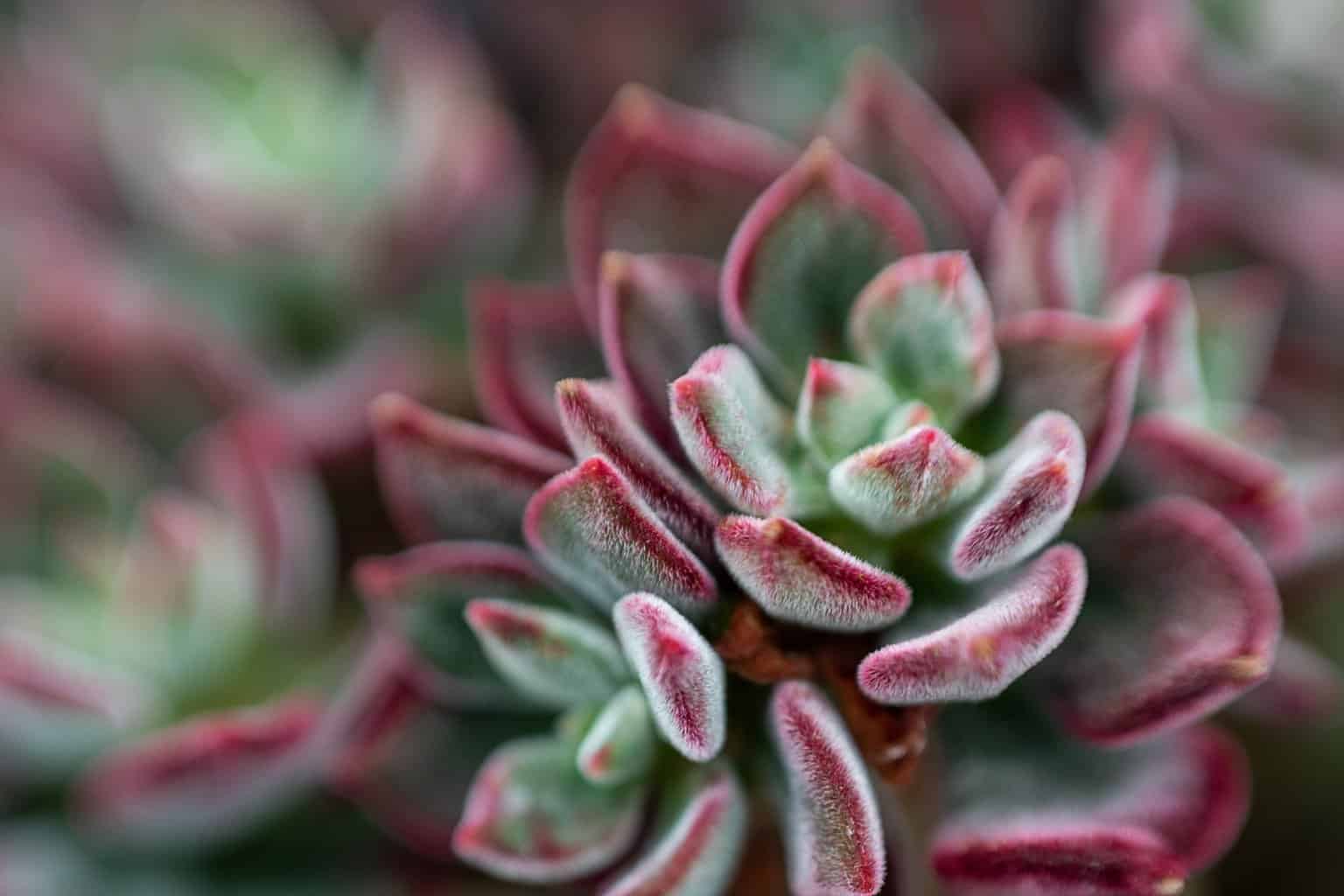
Yes, the red velvet plush plant is beautiful under the right conditions, and you will always want to have more than one. The best way to achieve this when Echeveria grows is with propagation. You can do this in three methods:
Using the Offsets
This is the easiest method to propagate succulents and the best choice if you are an impatient gardener. All you do is remove the tiny version of the mother plant and need not wait long for new plants to develop.
The pups you can remove separating them from the parent plant using your fingers or a clean knife. We recommend removing them as close to the mother plant. Doing this provides enough roots to place in a very porous soil mix.
But before you plant them, leave them to be callous over to prevent bacterial and fungal infections. If you can, you can do this when repotting the parent plant, as you can use some of the same soil from the moth added to the mix.
Leaf Cuttings
The leaf or stem cuttings are another popular way to ensure you have more than one Echeveria harmsii plant. The best is to use sterilized pruners to snip off the top of the rosette or cut off some of the leaves.
After collecting your cuttings, leave them to dry for a few days, as with the pups. Now, you can use a rooting hormone to speed up the root growth before placing it on moist soil. Then place them in dim light until you see new growth.
Growing from Seeds
The method takes a long as you will need loads of patience. Hence, you can buy seeds or collect them from your Echeveria harmsii plant. You can then sow the seeds in moist soil but remember the proper drainage needs to be well draining. Please place them in a bright warm spot and keep them moist.
Plush Plant Succulents Varieties
When you look at the Echeveria species, you can find different varieties from the plush plant. Here are some of our favorites.
Perle Von Nurnberg
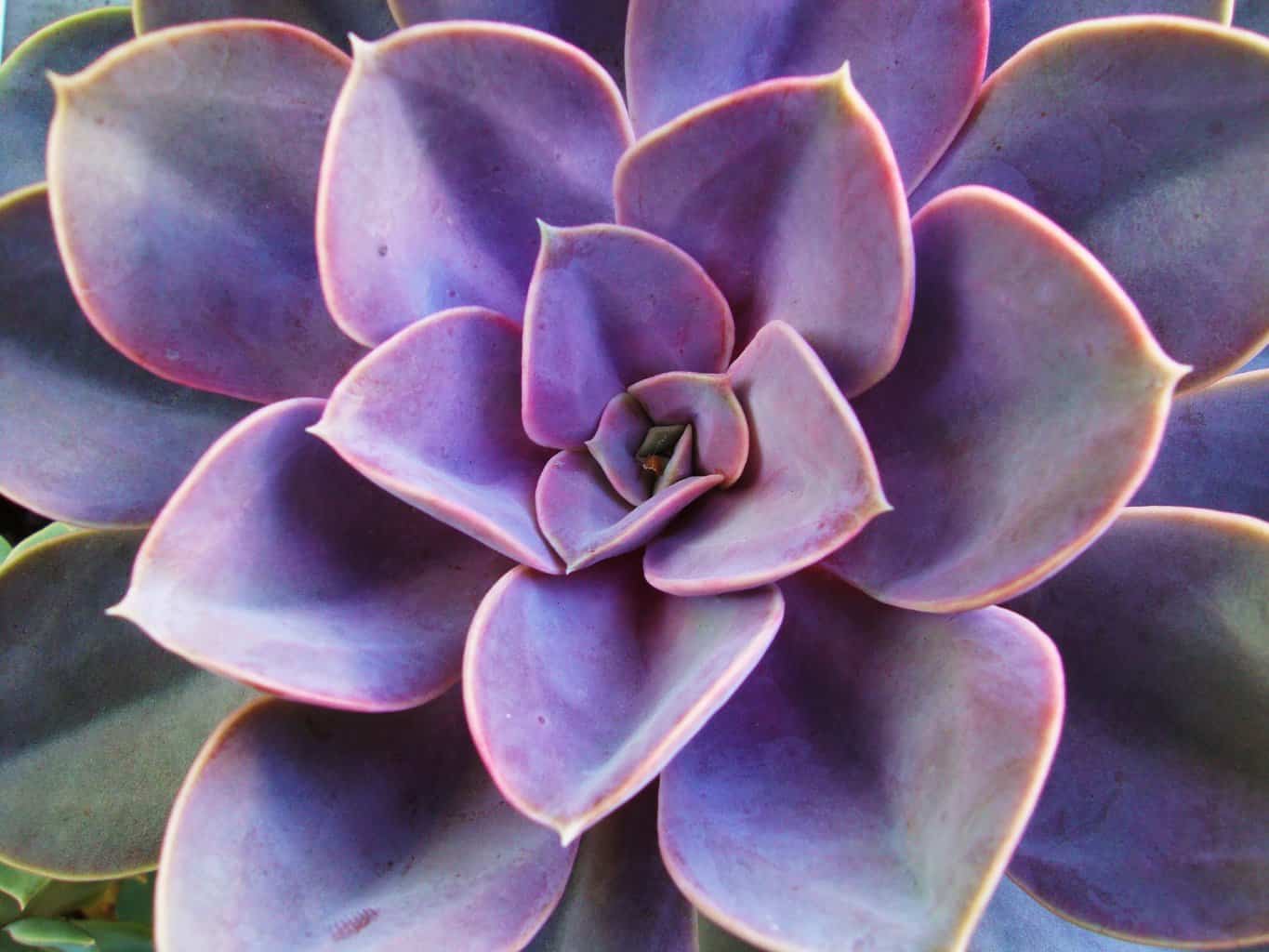
It is a popular type and has a solitary rosette that is paddle-shaped with pastel leaf colors. It has this gorgeous dusty appearance. When in low light, the leaves turn grayish, but when in full sun, it turn to a bright purple and pink.
Painted Echeveria

It is an unusual succulent plant that looks as if painted with dark green leaves with vertical red stripes. It loves the sun with well–drained soil and little water to grow happily.
Dusty Rose
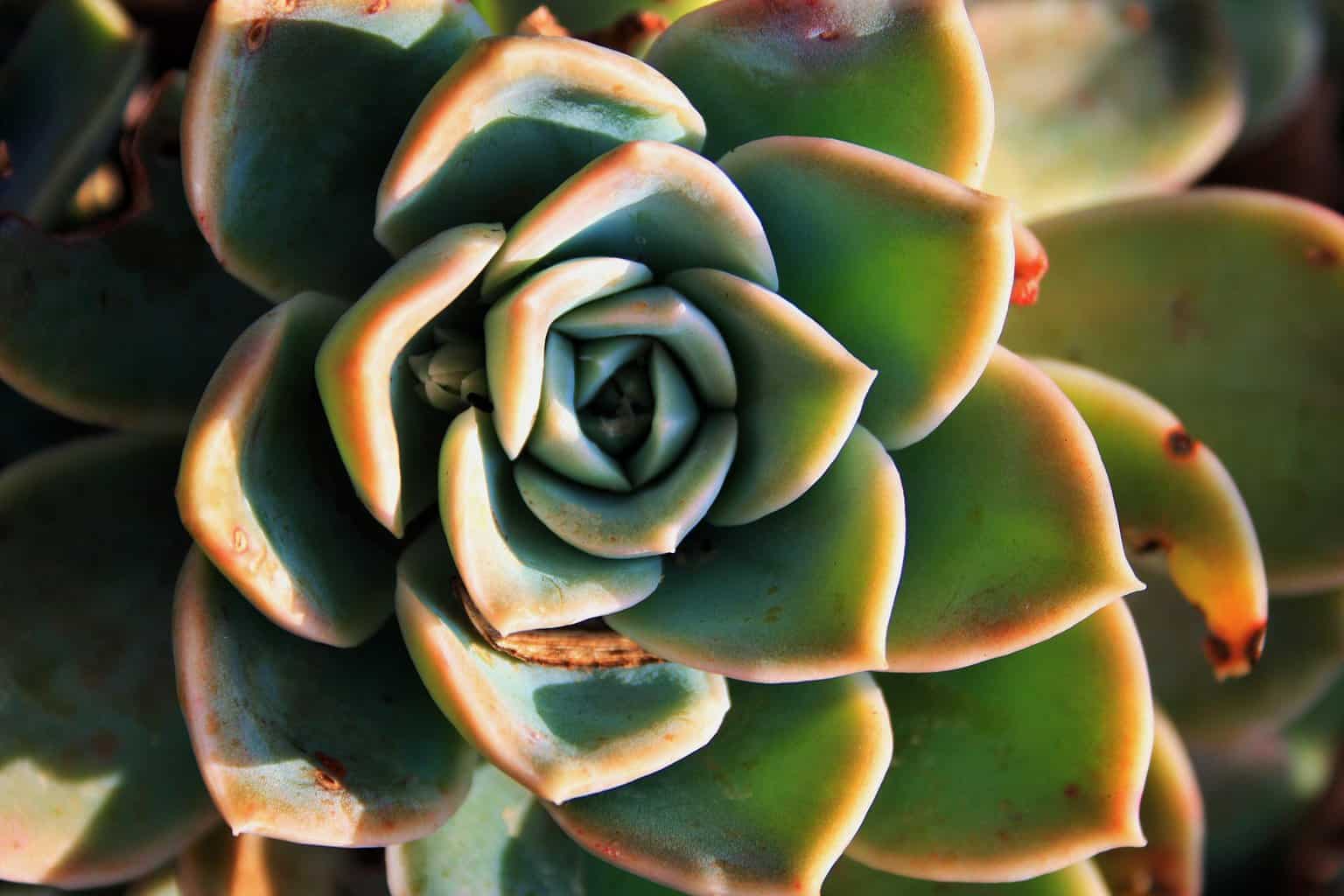
The dusty rose blooms with bright orange-red flowers emerging from tall stalks. It thrives in full sun with little water but is a less frost-tolerant hybrid.
Common Problems
The most serious problem you can face when Echeveria grows is overwatering, leading to the root rotting. Occasionally your plant can become the home to spider mites, aphids, and mealybugs and is treatable with neem oil or insecticides.
Another concern is that there are times your plant is over-fertilized, resulting in your plant looking yellow with stunted growth and dried leaf margins.
Whether you want to buy, sell or simply reach out to other plant enthusiasts, Plantly is the right place to be!
In stock In stock (can be backordered) Only 1 left in stock In stock
$10.00
Sold By:
Cacti and Exotica
Echinopsis chamaecereus—Peanut Cactus
Rated 4.98 out of 5 based on 59 customer ratings00
Sold By:
Cacti and Exotica
Free Shipping
$30.99
Sold By:
Gar-Zen Botanical Design
Heliconia rostrata Lobster Claw Plant Ships Free.
Only 9 available and it’s in 1 people’s basket Rated 4.86 out of 5 based on 49 customer ratings00
Sold By:
Gar-Zen Botanical Design
Free Shipping
$345.29
Sold By:
BONSAI WORLD LLC
Hawaiian Umbrella Bonsai Tree Banyan Style (arboricola schfflera)
Sold By:
BONSAI WORLD LLC
$44.99
Sold By:
Succulent Oasis
Medium Succulent Plant – Star Aloe ‘Tarantula’ Hybrid. An extremely rare and very limited Aloe.
Rated 4.84 out of 5 based on 352 customer ratings06
Sold By:
Succulent Oasis
